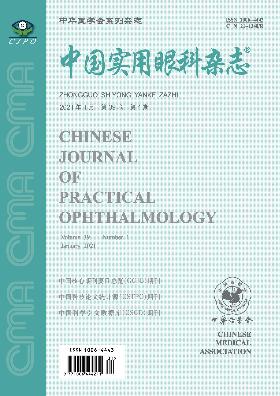玻璃体切除术患者视听觉的研究
引用次数: 0
摘要
目的探讨球后麻醉和静脉增强局麻对患者视觉和听觉的影响。方法对209例患者进行前瞻性研究,其中A组113例采用球后神经阻滞麻醉;B组(球周麻醉联合静脉强化麻醉)96例于术后第一天在武汉大学人民医院眼科行玻璃体切割手术。研究了大鼠的视、听感觉及麻醉对视、听感觉的影响。结果A组78.8%的患者有视觉记忆,显著高于B组(P <0.05)。A组90.3%的患者术中有听觉记忆,高于B组(P <0.05)。球后麻醉组视、听知觉记忆较强化麻醉组强,但局麻与静脉强化麻醉联合使用更有助于减轻焦虑。结论麻醉方式的选择对玻璃体切除术患者的视听觉有显著影响。局部麻醉联合静脉强化麻醉是焦虑、紧张患者的较好选择。关键词:玻璃体切除术;麻醉;视觉和听觉;问卷调查本文章由计算机程序翻译,如有差异,请以英文原文为准。
Investigation of visual and auditory perception in patients undergoing vitrectomy
Objective
To investigate the perception of vision and audition in patients with retrobulbar anesthesia and intravenous potentiated local anesthesia.
Methods
A prospective study of 209 cases (113 cases in group A, retrobulbar nerve block anesthesia; 96 cases in group B, peribulbar anesthesia combined with intravenous potentiated anesthesia) who underwent pars plana vitrectomy in Department of Ophthalmology of Renmin Hospital of Wuhan University were investigated on the first day after operation. The visual and auditory sensation and the effect of anesthesia on them were studied.
Results
In group A, 78.8% of patients had visual memory, which was significantly higher than that of B group (P <0.05). In group A, 90.3% of patients had intraoperative auditory memory, which was higher than that of B group (P <0.05). In the retrobulbar anesthesia group, the memories of visual and auditory perception were stronger than that in the potentiated anesthesia group, but the combination of local anesthesia and intravenous potentiated anesthesia was more helpful to reduce anxiety.
Conclusions
The choice of anesthesia method has a significant influence on the visual and auditory perception of patients undergoing vitrectomy. Local anesthesia combined with intravenous potentiated anesthesia is a better option for patients with anxiety and tension.
Key words:
Vitrectomy; Anesthesia; Visual and auditory perception; Questionnaire survey
求助全文
通过发布文献求助,成功后即可免费获取论文全文。
去求助
来源期刊
自引率
0.00%
发文量
9101
期刊介绍:
China Practical Ophthalmology was founded in May 1983. It is supervised by the National Health Commission of the People's Republic of China, sponsored by the Chinese Medical Association and China Medical University, and publicly distributed at home and abroad. It is a national-level excellent core academic journal of comprehensive ophthalmology and a series of journals of the Chinese Medical Association.
China Practical Ophthalmology aims to guide and improve the theoretical level and actual clinical diagnosis and treatment ability of frontline ophthalmologists in my country. It is characterized by close integration with clinical practice, and timely publishes academic articles and scientific research results with high practical value to clinicians, so that readers can understand and use them, improve the theoretical level and diagnosis and treatment ability of ophthalmologists, help and support their innovative development, and is deeply welcomed and loved by ophthalmologists and readers.

 求助内容:
求助内容: 应助结果提醒方式:
应助结果提醒方式:


